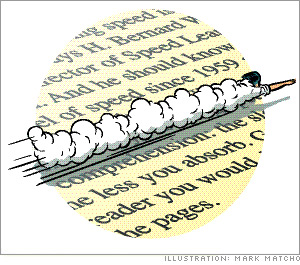 Steve Sipress
Head Rhino & Chief Strategist
Steve Sipress
Head Rhino & Chief Strategist
Howard Stephen Berg: Improving Reading Comprehension Part 3 – Understanding Inspectional Reading
 This article will focus on the second level of four levels of reading comprehension as defined in Mortimer Adler’s ground-breaking book, “How To Read A Book.” This second level is called “Inspectional Reading,” and can help you dramatically increase your reading speed and cut down on wasted time. Let me share with you how to accomplish this and much, much more. Let us begin by learning about this important level.
This article will focus on the second level of four levels of reading comprehension as defined in Mortimer Adler’s ground-breaking book, “How To Read A Book.” This second level is called “Inspectional Reading,” and can help you dramatically increase your reading speed and cut down on wasted time. Let me share with you how to accomplish this and much, much more. Let us begin by learning about this important level.
When you are swiftly reading a book to discover its main ideas and points, you are performing inspectional reading. Instead of learning the details, you are identifying the details to look at later if they turn out to be important to your purpose. There is actually a powerful four-step process here — scope, schema, scan, and skim. Let us begin by looking at how to integrate these four steps into your learning plan.
- Scope — Scoping out a book is simple. You turn to the start of your text, and begin moving your hand rapidly down each page. It should take about 1-2 seconds to view each page. You are not reading at this speed. What you are doing is determining the main idea of the book. Why was it written? What does it cover? Does it have chapters, or sections? Is this information that can help you?
- Schema — Now you are ready for the second step called schema. Once again you begin reading very quickly through the book. It shouldn’t take more than a few minutes to get to the very end. This time you want to see what has the writer done to make important information stand apart from the rest of the text. Did they use special effects like bold, italics, underlining? How about special fonts, or colors? Are there charts, diagrams, tables, and end material? End material can include questions, summaries, and a glossary among many other possible items. Your goal at this stage is not to learn the material, but simply to see what the writer has done to make it easier to spot important information.
- Scan —Your next step is to begin scanning through your material. While scanning you are looking for several very important items. Items you probably should write down. They include the new words, names, and questions. When you think about it 80% of learning a new subject often consists of learning the new vocabulary.
- Skim — The final step is to skim your text. In this step you will do several things. You want to write down the meanings for the important words. You want to write down the accomplishments of the important people. Finally, you want to find the answers to all the questions asked by the writer.
Once you complete your scope, schema, scan, and skim of your text, you are done performing inspectional reading. At this point, you should have a good grasp of the main ideas, and able to determine if a deeper understanding is necessary. That deeper understanding will be accomplished by reading analytically.

Recent Comments